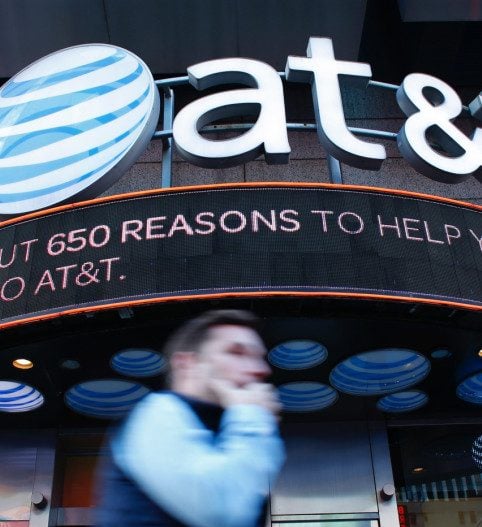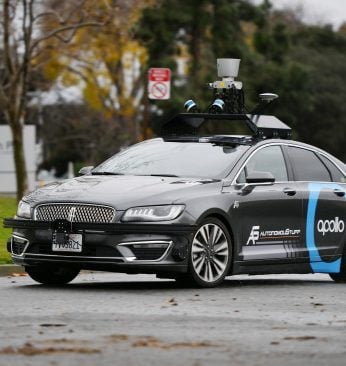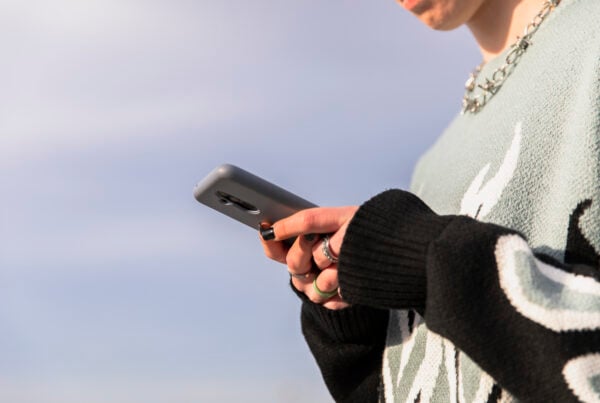Find out the week’s top mobile stories from around the world.
This week.. AT&T completes its acquisition of Time Warner, the ‘world’s first cryptocurrency mobile phone network’ goes live, 3 Ways advertisers can use mobile to reach consumers during the World Cup and much more.

AT&T completes its acquisition of Time Warner
Tech Crunch
AT&T has sealed the deal to buy Time Warner in a major piece of media and technology consolidation.
The deal — which is $85.4 billion and a total of $108 billion with debt — was first announced in October 2016 and, having passed a court approval earlier this week, it was completed on Thursday.
That’s a long cycle to complete a transaction, but this is a complicated one that sees AT&T take control of Time Warner, as well as HBO, Warner Brother’s film studio and its Turner channels. That’s likely to create a complicated web of conflicts, as both media distribution and content creation come together under the same parent.
Read more…
Snap Kit could turn Snapchat into the next mobile marketplace
The Next Web
Today, Snapchat announced Snap Kit, a suite of tools which allow developers to integrate their apps into Snapchat and vice versa. Among a few other boons to Snap’s fickle user base, this brings in a whole new facet to Snapchat: shopping.
Rumors about Snap Kit have been swirling for a few weeks, as something which would allow app developers to add Snapchat as a login option. Now it’s out, and the integrations are a little more in-depth than that.
The Kits — Story, Login, Creative, and Bitmoji — allow users to integrate multiple features from Snapchat, including its camera and avatars, and it also allows brands to spread their particular labels to Snapchat through their apps. And for some of those brands — Poshmark or Postmates for example — that means using Snapchat’s built-in external links to direct users to their products.
Read more…
The world’s first cryptocurrency mobile phone network goes live
IBS Intelligence
The Stellar blockchain has a new claim to fame. Its makers argue that it is the fastest protocol for building financial products. But now a secondary use has emerged from its ability to connect people.
The Stellar blockchain has been used to create the world’s first global mobile phone network, Yovo, which operates SIM and virtual SIM-based networks.
Yovo has a business model that allows users to earn and spend cryptocurrencies on mobile services. The initiative is a joint work involving 501 mobile network partners in 131 countries. In the next year, it plans to ramp those figures up to 200 countries in the next 12 months.
Read more…
3 Ways Advertisers Can Use Mobile to Reach Consumers During the World Cup
Adweek
In the 21st century, consumers are increasingly transitioning toward mobile for streaming sports. In fact, a recent Google survey found that 30 percent of sports fans say they now stream live sports on their smartphones or tablets.
With the 2018 World Cup just around the corner, marketers across multiple industries have a significant opportunity to engage with consumers on mobile. The 2014 World Cup reached 100 million U.S. viewers, and in many countries, it reached up to 90 percent of its total population. The audience is huge and ripe for engagement, and the opportunity is up for any country or marketer’s taking.
With the official FIFA mobile app seeing Advertisers who prioritize mobile and keep the following strategies in mind will gain significant lifts in loyalty and engagement long after the World Cup is over.
Read more…
Baidu and China Mobile partner on AI and 5G, focusing on self-driving cars
Venture Beat
Signaling the types of alliances that will soon become commonplace thanks to evolving AI and wireless technologies, Chinese search giant Baidu and mobile company China Mobile today announced a comprehensive partnership to collaborate on AI, 5G, and big data — “frontier areas” where each company’s strengths will be necessary to move forward.
Initially, the companies will offer first-of-kind cellular discounts for use of Baidu services, including special China Mobile data plans specifically for 13 Baidu products, including the Netflix-like iQiyi video service, Baidu’s own app, and Baidu PostBar. On the AI front, they will collaborate on image recognition, voice recognition, and natural language processing to leverage AI in telecommunications applications, using Baidu’s algorithms across China Mobile’s networks and services, as well as in future intelligent devices and connected homes.
Read more…
Demand for mobile streaming to surge during World Cup
Advanced Television
Independent research based on over 3,000 European subscribers on behalf of Openwave Mobility has found that 1 in 3 football fans (31 per cent) will watch the 2018 Russia World Cup using mobile data. This is nearly double the number of people that watched the 2014 Brazilian World Cup (17 per cent) using mobile data. The 2018 World Cup study was conducted in the UK, Spain and Germany and found that mobile operators can expect a surge in live streaming traffic over the course of the tournament.
Many subscribers (29 per cent), however, revealed that they will shun their mobiles owing to poor Quality of Experience (QoE) and bill shock. During the 2014 Brazilian tournament, European subscribers shared the same worries through a study conducted in May 2014. Even after four years, the same fears of poor QoE and bill shock still dog the industry.
Read more…
Ericsson Analysts Say More than 20 Percent of Mobile Data Will Be 5G by 2023
Wireless Week
The latest wireless industry forecast from Ericsson predicts that more than one-fifth of mobile data traffic worldwide will run on 5G networks in five years’ time.
The amount of data traffic overall, meanwhile, is expected to climb approximately eight-fold by 2023.
“2018 is the year 5G networks go commercial as well as for large-scale deployments of cellular IoT,” Fredrik Jejdling, Ericsson EVP and Head of Business Area Networks, said in a statement. “These technologies promise new capabilities that will impact people’s lives and transform industries.”
The Swedish telecom equipment maker previously projected that 5G subscriptions would eclipse 1 billion by 2023 and account for about 12 percent of all mobile subscriptions.
Read more…
Apple’s New Privacy Guidelines May Get Facebook’s Awful Onavo VPN Off the App Store
Gizmodo
Apple’s new App Store privacy guidelines restricting apps that collect data on users’ friends—specifically, the address books of iPhone users—already seemed to be in large part a response to Facebook’s sprawling Cambridge Analytica data scandal.
But the company could also be targeting Facebook’s Onavo Protect VPN service, which poses as a way to grant users anonymity from service providers and websites but is explicitly designed to vacuum up huge amounts of data on the device usage habits of anyone who enables it.
Bloomberg, which reported on Apple’s crackdown on contact collection on Tuesday, published another article today suggesting that another update to the App Store guidelines banning the collection of other app data for “analytics” or profit could be a big middle finger to Onavo:
Read more…
Is The GDPR Coming To The US?
PYMNTS
Imitation is the sincerest form of flattery, right? If so, some European regulators might like what’s going on with California in regards to digital privacy.
This fall, voters in California will vote on a ballot initiative called the California Consumer Privacy Act. According to supporters, they have enough signatures to put it up for statewide approval on Nov. 6.
According to the website in support of the act, it would establish “new, groundbreaking consumer rights” and enable people to “find out what information businesses are collecting about you and gives you the choice to tell businesses to stop selling your personal information.”
Read more…
Google Clears Up Confusion Around Mobile-First Indexing
Search Engine Journal
In response to confusion surrounding mobile-first indexing, Google published a series of tweets clearing up the most common misunderstandings.
Here is a recap of everything Google recently clarified.
- URLs in search: With mobile-first indexing, Google indexes the URL of the mobile-friendly version of a site. When there are separate mobile and desktop URLs, Google shows the mobile URL to mobile users, and the desktop URL to desktop users. In both cases, the indexed content will be the mobile version.
- Crawled counts: The total number of crawled URLs per day generally won’t change. However, the balance will shift from mostly-desktop to mostly-mobile crawls. During a switch-over to mobile-first indexing Google may temporarily crawl more as it reindexes everything.














